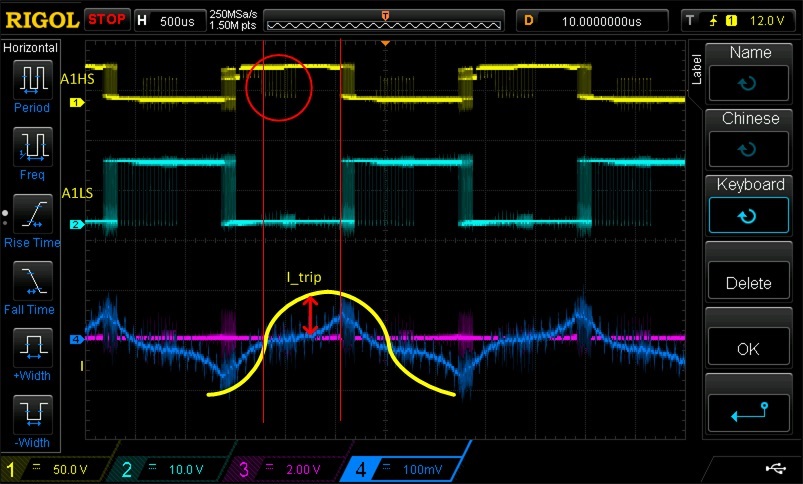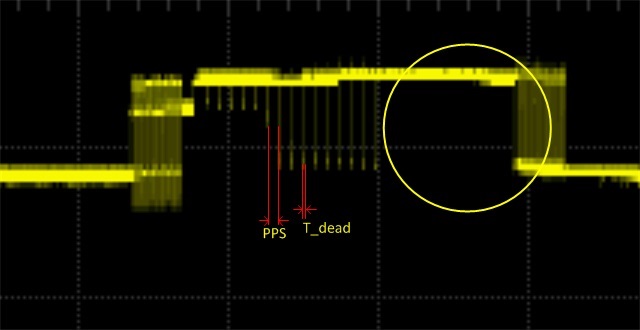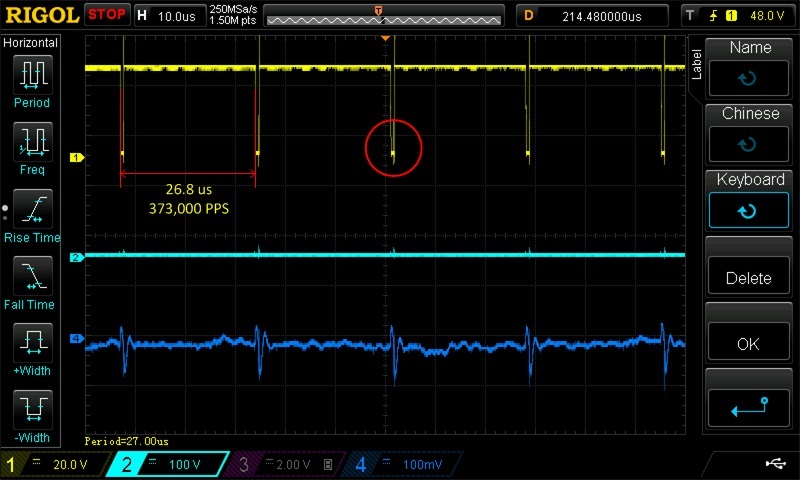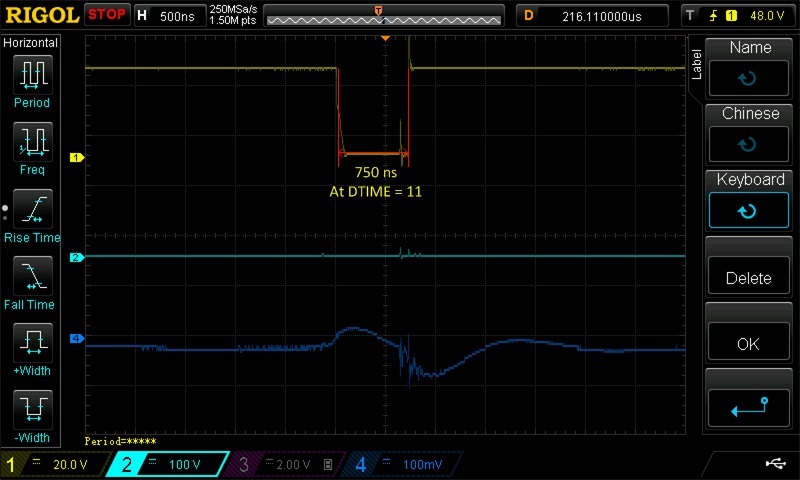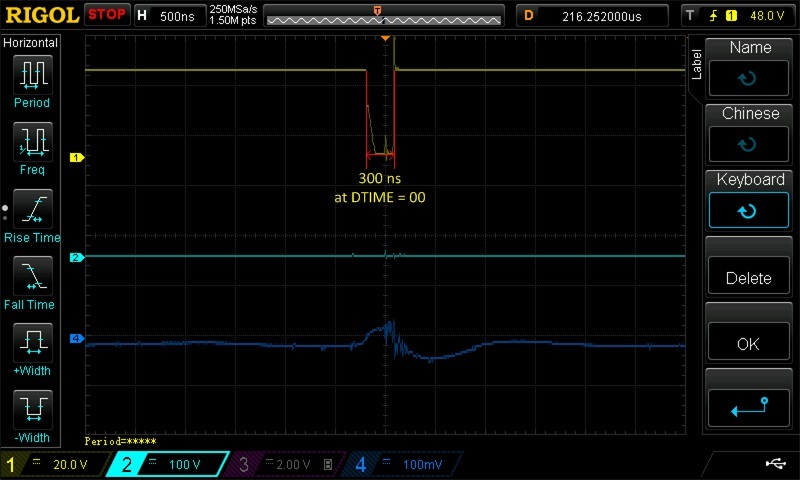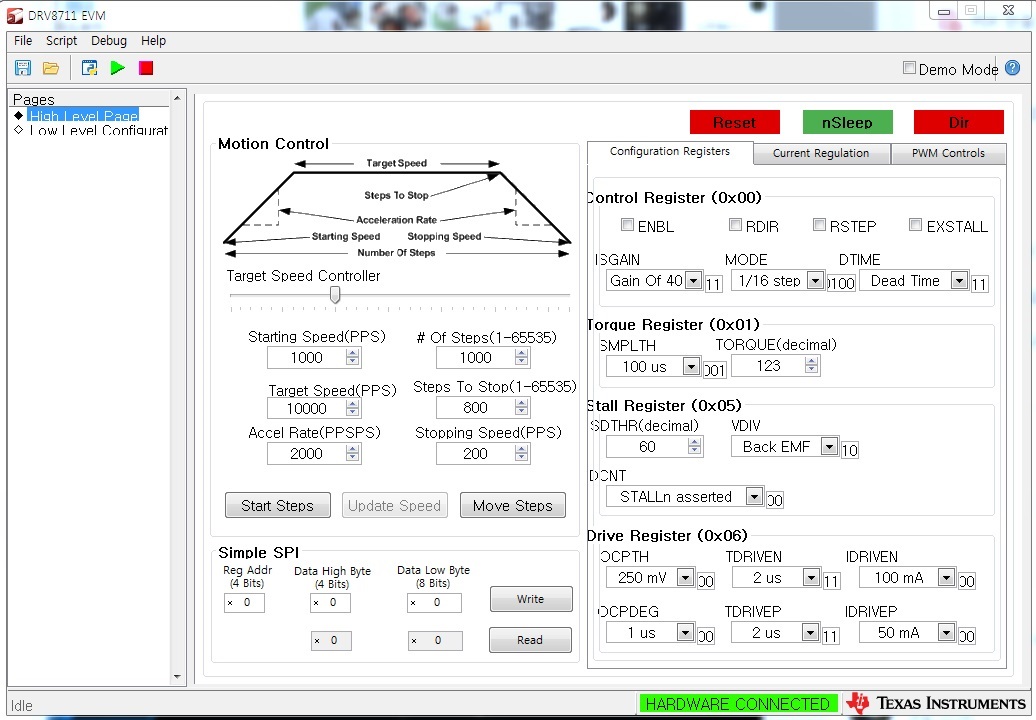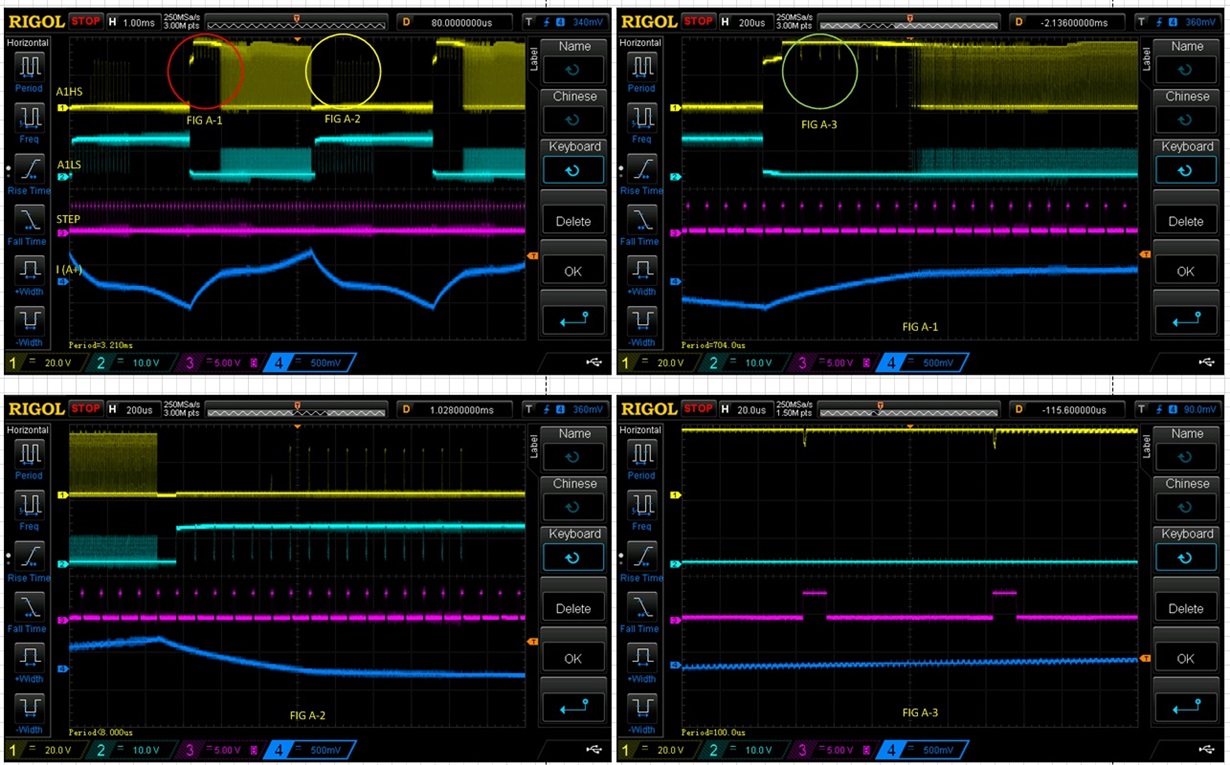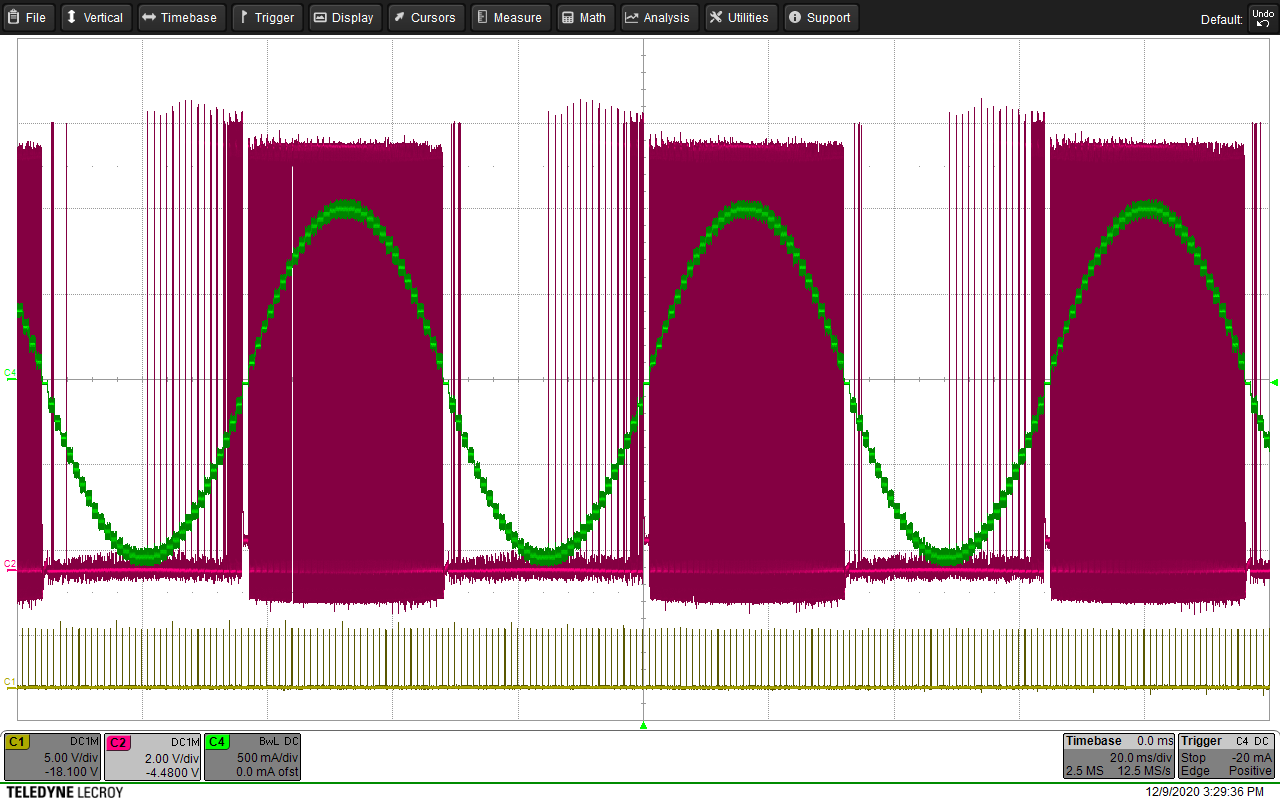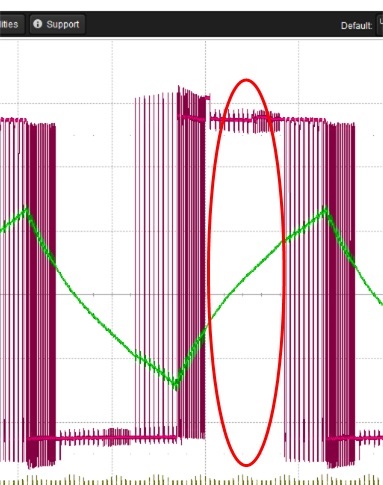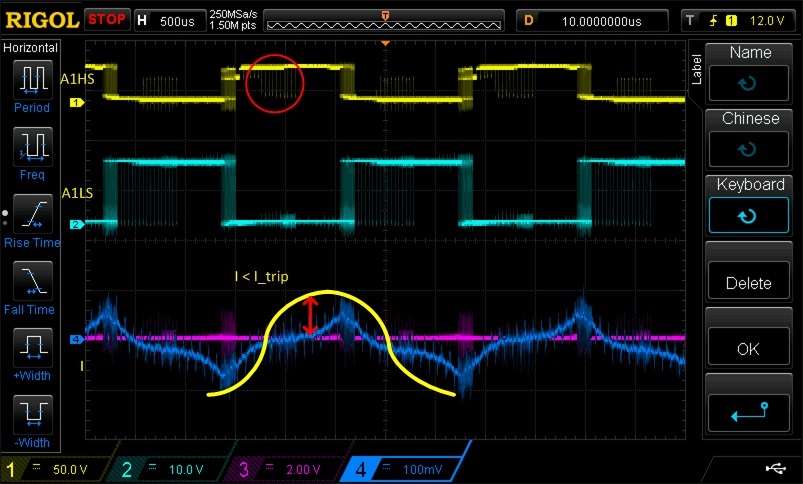Hello.
I'm currently performing a series of testing related to driving a step motor using DRV8711EVM.
While conducting the test, unusual waveform at the gate signals;this is solely based on my personal observation, have been found.
The unusual waveform I found during the test are shown in the picture below.
CH1 : A1HS
CH2 : A1LS
CH3 : NC
CH4 : Current Probe (A+)
I expected A1HS to be remained "Turned ON" at all times as the section indicated between two red lines is considered as "I_trip > I".
However, as shown in the circle indicated in red, it was found A1HS has been turned off for a moment.
(The duty and period of this signal seems to be T_off and PPS, respectively.)
Please provide me with the detail explanation regarding the matter mentioned above.
Thank you.
Best Regards.


